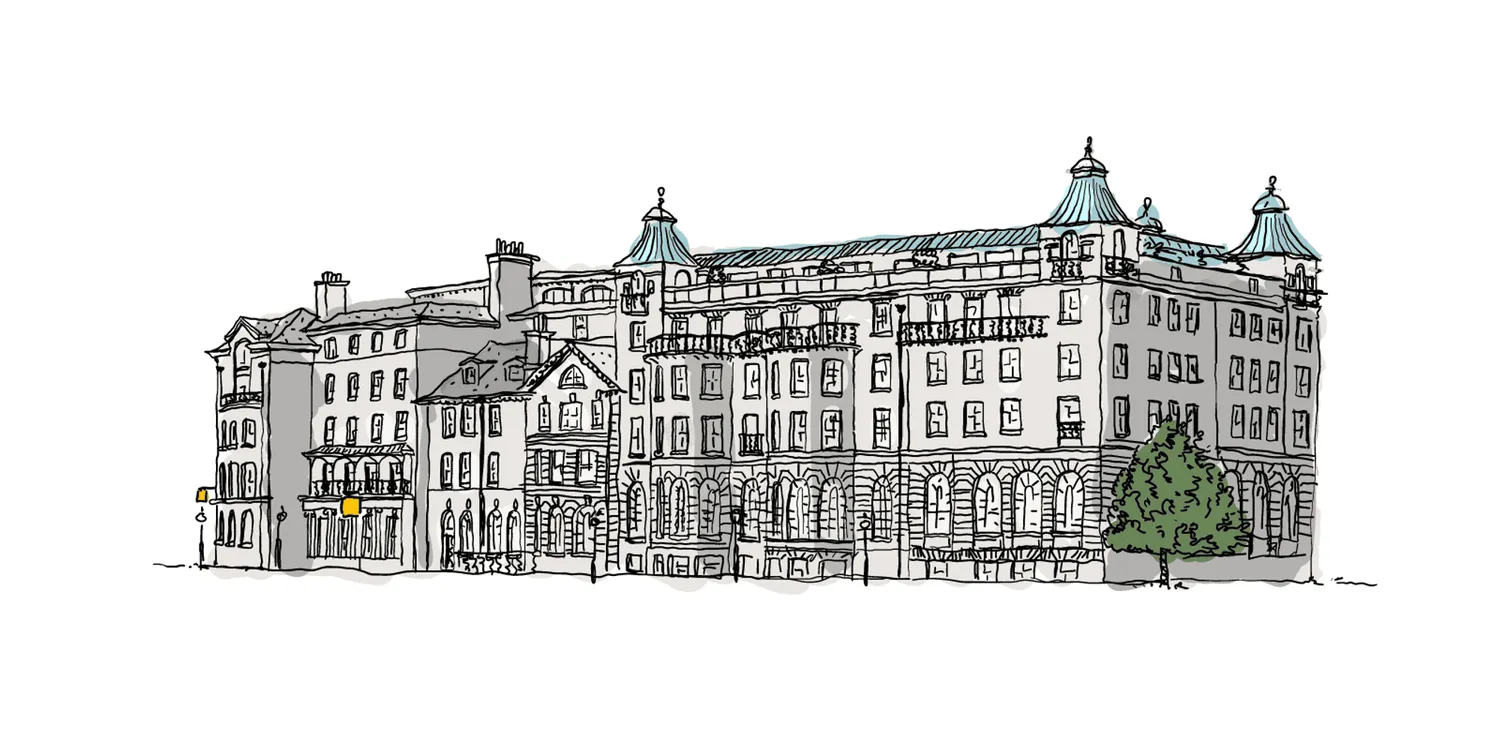20/08/2019
Quite surprising at first, particularly if it’s a few years since you’ve been to Cambridge. I think I had probably walked past the hotel several times without really noticing it due to a 1960s extension which hid much of the history when viewed from the busy Regent’s Road. This has now been demolished and a new, matching porte cochere with the name of the hotel on it creates a grand impression, despite the slightly odd combination of looking old (if recently cleaned) and completely new.
I arrived in the morning, and, knowing that my room wouldn’t be ready, asked if I could drop my bags and also use one of the parking spaces under the hotel (there are 22 of them, available at £30 per day). Staff were polite, helpful, and even offered to call me when my room was ready as I went off to explore Cambridge. A very good first impression was heightened by the design of the lobby, with its Cambridge Blue timber panelling, grey and green patterned marble floor and art deco design lighting, though when I arrived it was lovely and bright from the sunshine outside and the large windows allowed natural light in.
The overall redevelopment was by architect John Simpson, who ensured the new building structure fit with Cambridge’s better-known architectural heritage, while the interiors were designed by Martin Brudnizki. The attention to detail is outstanding, from the fixtures and furnishings to the way that so much of it has been tied into the history of Cambridge – literally in the case of the tie pattern in the corridor carpets based on the design of the original University tie – but also in the aged parquet flooring, the wallpaper in the walls of the bar reflecting the old marbled fly leaves of books, the naming of suites after members of the Bloomsbury set, and the dozens of high-quality hardbacks in those rooms.
Where is it?
On Regent Street on the road out to (and back from) the railway station, from where trains take 45 minutes into London’s Kings Cross.
Rooms
The hotel now has 192 rooms (up from an original 119) in four main categories: Cosy (19m2); Classic; Superior and 12 Suites. These categories are being rethought at the moment (not so much the names as the numbers). The information which follows was correct in February 2019, but may change a little.
Despite being rebuilt, the hotel is still on two levels, so while from the outside it is a four storey property, from the inside there are nine room floors, and some corridors with steps in them, so worth checking if that’s a problem.
The 26 entry-level Cosy rooms face internally, and so are very quiet, especially compared with rooms that face the surrounding roads -Regent Street and Park Terrace – where there are a lot of buses (the rooms are double glazed, but there is noise). All rooms have Hypnos beds, 300-thread count sheets, tea and coffee along with fresh milk in the fridges (no mini bars), safes, and DR Harris toiletries in bathrooms with heated black and white tile-pattern floors and heated mirrors. The specification, furnishings and furniture are all of a very high standard – there are small desks intended to look like a scholar’s desk (with a mustard leatherette top), antique-looking lamps and pale blue walls. There are Cambridge prints on the walls, and the Do Not Disturb sign is in the shape of a bookmark.
Reviewed by Tom Otley
